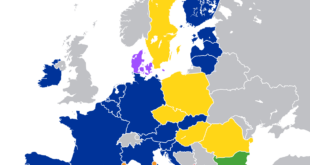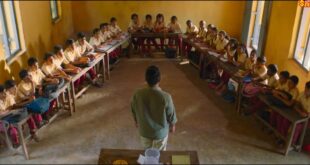GS-2
JANANI SURAKSHA YOJANA
- Janani Suraksha Yojana (JSY) is a safe motherhood intervention under the National Rural Health Mission (NHM).
- It is being implemented with the objective of reducing maternal and infant mortality by promoting institutional delivery among pregnant women.
- The scheme is under implementation in all states and Union Territories (UTs), with a special focus on Low Performing States (LPS).
- Janani Suraksha Yojana was launched in April 2005 by modifying the National Maternity Benefit Scheme (NMBS).
- The NMBS came into effect in August 1995 as one of the components of the National Social Assistance Programme (NSAP).
- The scheme was transferred from the Ministry of Rural Development to the Department of Health & Family Welfare during the year 2001-02.
- The NMBS provides for financial assistance of Rs. 500/- per birth up to two live births to the pregnant women who have attained 19 years of age and belong to the below poverty line (BPL) households.
- When JSY was launched the financial assistance of Rs. 500/- , which was available uniformly throughout the country to BPL pregnant women under NMBS, was replaced by graded scale of assistance based on the categorization of States as well as whether beneficiary was from rural/urban area.
- States were classified into Low Performing States and High Performing States on the basis of institutional delivery rate i.e. states having institutional delivery 25% or less were termed as Low Performing States (LPS) and those which have institutional delivery rate more than 25% were classified as High Performing States (HPS).
- Accordingly, eight erstwhile EAG states namely Uttar Pradesh, Uttarakhand, Madhya Pradesh, Chhattisgarh, Bihar, Jharkhand, Rajasthan, Odisha and the states of Assam & Jammu & Kashmir were classified as Low Performing States. The remaining States were grouped into High Performing States.
Background on JSY
- About 56,000 women in India die every year due to pregnancy related complications. Similarly, every year more than 13 lakh infants die within 1year of the birth and out of these approximately 2/3rd of the infant deaths take place within the first four weeks of life.
- Out of these, approximately 75% of the deaths take place within a week of the birth and a majority of these occur in the first two days after birth.
- In order to reduce the maternal and infant mortality, Reproductive and Child Health Programme under the National Health Mission (NHM) is being implemented to promote institutional deliveries so that skilled attendance at birth is available and women and new born can be saved from pregnancy related deaths.
- Several initiatives have been launched by the Ministry of Health and Family Welfare (MoHFW) including Janani Suraksha Yojana (JSY) a key intervention that has resulted in phenomenal growth in institutional deliveries.
Objective
Reducing maternal and infant mortality by promoting institutional delivery among pregnant women.
Target Group and benefits
- The scheme focuses on poor pregnant woman with a special dispensation for states that have low institutional delivery rates, namely, the states of Uttar Pradesh, Uttarakhand, Bihar, Jharkhand, Madhya Pradesh, Chhattisgarh, Assam, Rajasthan, Orissa, and Jammu and Kashmir.
- While these states have been named Low Performing States (LPS), the remaining states have been named High Performing states (HPS).
- The scheme also provides performance based incentives to women health volunteers known as ASHA (Accredited Social Health Activist) for promoting institutional delivery among pregnant women.
Under this initiative, eligible pregnant women are entitled to get JSY benefit directly into their bank accounts. Cash entitlement for different categories of mothers is as follows:
- Cash Assistance for Institutional Delivery (in Rs.)
- In both LPS & HPS, BPL/SC/ST women are entitled for cash assistance in accredited private institutions
- *ASHA package of Rs. 600 in rural areas include Rs. 300 for ANC component and Rs. 300 for facilitating institutional delivery
- **ASHA package of Rs. 400 in urban areas include Rs. 200 for ANC component and Rs. 200 for facilitating institutional delivery
Cash assistance for home delivery
- BPL pregnant women, who prefer to deliver at home, are entitled to a cash assistance of Rs. 500 per delivery regardless of the age of pregnant women and number of children.
Situation
- High out of pocket expenses being incurred by pregnant women and their families in the case of institutional deliveries in form of drugs, User charges, diagnostic tests, diet, for C –sections.
SOURCE:PIB,ECONOMICS TIMES,
 Chinmaya IAS Academy – Current Affairs Chinmaya IAS Academy – Current Affairs
Chinmaya IAS Academy – Current Affairs Chinmaya IAS Academy – Current Affairs



